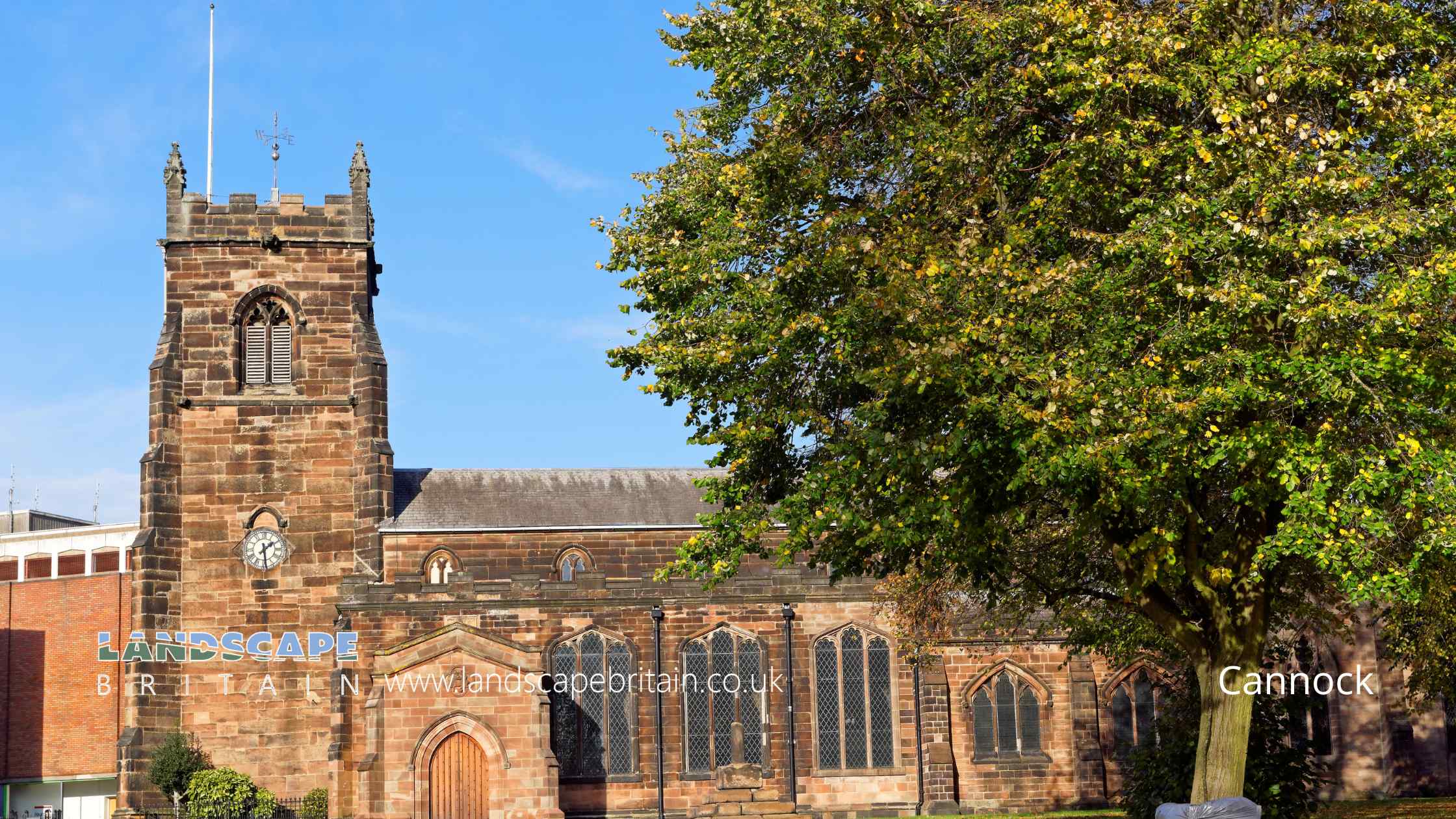
Cannock by Grzegorz Wasowicz
Cannock
Cannock is a town in Staffordshire, England, situated north of Birmingham and south of Stafford. It is the largest settlement in the Cannock Chase District and has historically been associated with coal mining, which played a key role in its development during the Industrial Revolution. The decline of the mining industry in the late 20th century led to significant economic changes, with the area transitioning towards retail, logistics, and service-based industries.
The town has a mix of modern and traditional architecture, with a pedestrianised shopping centre that includes both national retailers and independent shops. The nearby Orbital Retail Park provides additional shopping and dining options. Cannock is well-connected by road, with the M6 and M6 Toll providing access to the wider Midlands region. Cannock railway station offers services to Birmingham and Rugeley.
Cannock is located close to Cannock Chase, an Area of Outstanding Natural Beauty, which provides opportunities for outdoor activities such as walking, cycling, and horse riding. The town has various leisure facilities, including sports centres, parks, and a theatre. Local attractions include the Museum of Cannock Chase, which explores the area’s industrial and social history.
Cannock has seen residential expansion in recent years, with new housing developments accommodating a growing population. Despite its industrial past, it retains a strong sense of community and benefits from its proximity to both urban and rural environments.
Cannock is in Cannock Chase AONB, a designated Area of Outstanding Natural Beauty.
Created: 30 January 2025 Edited: 2 May 2025
Cannock
Local History around Cannock
There are some historic monuments around including:
Churchyard cross, St Luke's churchyardWorld War I instruction model of a trench system, and associated earthwork and building remains 850m north west of Fairoak Cottages, Cannock ChaseMoat House moated siteMoated site at Moat House FarmPillaton Old Hall.Wildlife in and Around Cannock
Mammals found in Cannock
There have been 23 species of mammals recorded in the cannock area.
| 45 Khz Pipistrelle (Pipistrellus pipistrellus) |
| Bank Vole (Myodes glareolus) |
| Chinese Barking Deer (Muntiacus reevesi) |
| Domestic Cat (Felis catus) |
| Field Mouse (Apodemus sylvaticus) |
| Badger (Meles meles) |
| Brown Rat (Rattus norvegicus) |
| Common Shrew (Sorex araneus) |
| Fallow Deer (Dama dama) |
| Field Vole (Microtus agrestis) |
Tap here for more mammals found in and around Cannock
Birds found in Cannock
There have been 50 species of birds recorded in the cannock area.
| Bittern (Botaurus stellaris) |
| Canada Goose (Branta canadensis) |
| Common Sandpiper (Actitis hypoleucos) |
| Dark-bellied Brent Goose (Branta bernicla subsp. bernicla) |
| Egyptian Goose (Alopochen aegyptiacus) |
| Buzzard (Buteo buteo) |
| Carolina Wood Duck (Aix sponsa) |
| Common Swift (Apus apus) |
| Dunlin (Calidris alpina) |
| European White-fronted Goose (Anser albifrons subsp. albifrons) |







